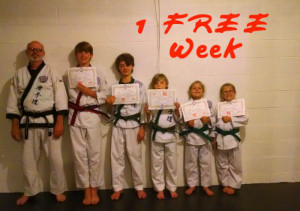
The instructor yells:
"If you do this drill five times with no mistakes, I'll do 10 pushups!"
You are looking at a class of now-highly-motivated students!
At Life Martial Arts Center, we build up 10 to 14 year olds using extrinsic motivation as one way to develop their positive connections to others.
There are three ways a person is extrinsically motivated:
- Reward - your child passes a rank exam and receives a new belt.
- Recognition - your child is recognized by others as a higher rank in class.
- External Challenge - if your child meets certain criteria, then something positive will happen.
Like other ways our students learn that are found in this article series, the importance of extrinsic motivation to a particular child is dictated by their personality. Shy, introverted children may not like being in the spotlight as much, especially with this age group.
However, there are many fun ways we engage all our EXTREME Skillz students with this teaching tool. Whether they are introverted or extroverted, how does extrinsic motivation affect your child's brain?
With the three ways a person is extrinsically motivated, listed above, our students are learning how to relate to other people. This connection to others releases oxytocin in their brains. Since this chemical acts as both a neurotransmitter and a hormone, the list of health benefits is quite long (1).
![]()
It's responsible for positive emotions leading to happiness. It has a calming effect; it can lower stress and anxiety. And when experienced in a positive environment it's important for building trust and connections with others. Our curriculum choices, delivered in a structured environment with clear rules of behavior, help our students' brains release oxytocin so they may positively grow emotionally and socially.
So, if you're watching our class, seeing kids proudly wearing their uniforms and excited to see their instructor doing pushups, remember we're teaching kids the way they learn. They're busy building positive emotional and social connections with others.
(1) Live Science, Oxytocin: Facts about the 'cuddle hormone'
(2) freepik.com, Brain Graphic
When is it most fascinating to see a group of kids laser-focused? When it's your child in that group, growing to their greatest potential! If you're interested in an activity for your child to grow physically, intellectually, emotionally, and socially, then reach out to us about our child development classes.
We're passionate about what we train and teach! We'd love to talk with you about your goals.



